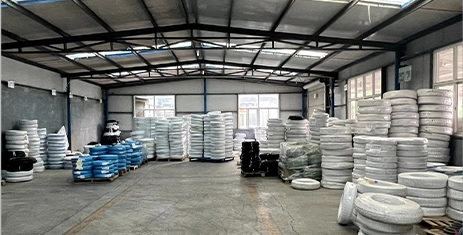r134a charging hose adapter
Understanding R134A Charging Hose Adapters A Key Component for Efficient Refrigerant Management
In the realm of automotive air conditioning systems, the refrigerant used plays a pivotal role in ensuring optimal cooling performance. One of the most common refrigerants in use today is R134A, a hydrofluorocarbon (HFC) that replaced the ozone-depleting R12. As vehicles aged and technology advanced, the need for efficient charging, recharging, and maintenance of air conditioning systems became paramount. This is where R134A charging hose adapters come into play, serving as critical components for handling refrigerants.
What is an R134A Charging Hose Adapter?
An R134A charging hose adapter is a specialized device designed to connect the refrigerant charging hose to the service ports on an automotive air conditioning system. These adapters are essential for safely transferring refrigerant into or out of the system, making them vital tools for automotive technicians and DIY enthusiasts alike. They come in various sizes and configurations, specifically designed for R134A systems, ensuring compatibility with the common service ports found on most vehicles.
Types of R134A Charging Hose Adapters
There are primarily two types of charging hose adapters available for R134A systems high-pressure and low-pressure adapters.
1. High-Pressure Adapters These are used to connect to the high-pressure service port of the air conditioning system. This port is responsible for the high-pressure side of the refrigerant cycle, allowing technicians to add or measure refrigerant levels when the system is functioning under high pressure.
2. Low-Pressure Adapters Conversely, low-pressure adapters are connected to the low-pressure service port. This port is crucial for the operation of the evaporator, where refrigerant absorbs heat and evaporates into a gas. Low-pressure charging is typically done when the system is off and allows for the introduction of refrigerant during maintenance or recovery procedures.
Importance of Proper Connection
Using the correct R134A charging hose adapter is essential for ensuring a proper seal and preventing refrigerant leaks. An improper connection not only leads to inefficient charging but can also create hazardous situations where refrigerant escapes into the atmosphere, contributing to global warming and potentially causing harm to humans and wildlife.
Moreover, improper charging can cause damage to the A/C system. Overcharging can lead to excessive pressure, which may result in compressor failure or other mechanical issues. On the other hand, undercharging can lead to inadequate cooling performance, resulting in discomfort for passengers and potential long-term damage to the system components.
r134a charging hose adapter

How to Use R134A Charging Hose Adapters
Using R134A charging hose adapters is relatively straightforward, but it requires attention to detail and safety considerations
1. Safety First Always wear appropriate personal protective equipment (PPE), including goggles and gloves. Refrigerant can be harmful if it comes into contact with skin or eyes.
2. Identify the Service Ports Locate the high-pressure and low-pressure service ports on the vehicle’s A/C system. Typically, the low-pressure port is larger and usually located on the larger A/C line.
3. Attach the Adapter Choose the appropriate charging hose adapter for the service port. Ensure that the adapter is clean and free from debris. Attach it securely, ensuring a tight fit to prevent leaks.
4. Connect the Charging Hose Once the adapter is in place, connect the refrigerant charging hose to the adapter. Open the valve slowly to allow refrigerant to flow into the system smoothly.
5. Monitor Pressure Levels Use a pressure gauge to monitor the system's pressure as you charge or recover refrigerant. Always refer to the manufacturer’s specifications for the appropriate pressure levels.
6. Disconnect and Seal After the charging process, carefully disconnect the charging hose and adapter. Replace the service cap immediately to prevent contamination.
Conclusion
R134A charging hose adapters are indispensable tools for anyone working with automotive air conditioning systems. Their role in the safe and efficient management of refrigerants cannot be overstated. Whether you are an automotive professional or a DIY enthusiast, understanding the function and operation of these adapters can help ensure proper maintenance of your vehicle’s air conditioning system, leading to better performance and longevity. Always prioritize safety and adhere to the recommended practices when working with refrigerants to contribute to a more sustainable environment.
-
Ultimate Spiral Protection for Hoses & CablesNewsJun.26,2025
-
The Ultimate Quick-Connect Solutions for Every NeedNewsJun.26,2025
-
SAE J1401 Brake Hose: Reliable Choice for Safe BrakingNewsJun.26,2025
-
Reliable J2064 A/C Hoses for Real-World Cooling NeedsNewsJun.26,2025
-
Heavy-Duty Sewer Jetting Hoses Built to LastNewsJun.26,2025
-
Fix Power Steering Tube Leaks Fast – Durable & Affordable SolutionNewsJun.26,2025

